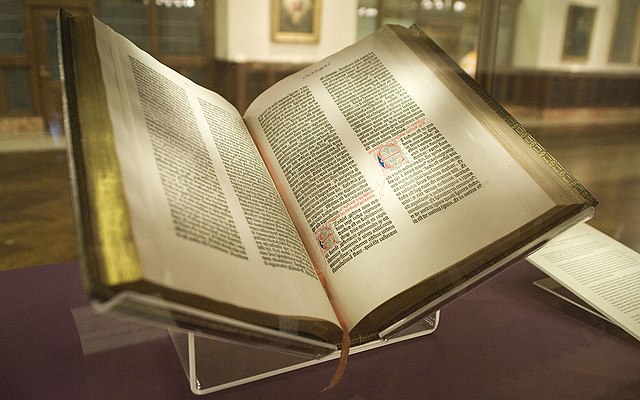Kingship and kingdom of God
The concept of the kingship of God appears in all Abrahamic religions, where in some cases the terms kingdom of God and kingdom of Heaven are also used. The notion of God's kingship goes back to the Hebrew Bible, which refers to "his kingdom" but does not include the term "Kingdom of God".
Stained glass by Hallward depicting Matt 5:10: "Blessed are the poor in spirit: For theirs is the Kingdom of Heaven".
God the Father on a throne, Westphalia, Germany, late 15th century
The term Abrahamic religion groups three of the major religions together due to their historical coexistence and competition; it refers to Abraham, a figure mentioned in the Hebrew Bible, the Christian Bible, and the Quran, and is used to show similarities between these religions and put them in contrast to Indian religions, Iranian religions, and the East Asian religions. Furthermore, some religions categorized as "Abrahamic" also share elements from other categories, such as Indian religions, or for example, Islam with Eastern religions.
A Jewish Rebbe holds a Torah scroll.
Christianity is based on the teachings of the Bible
A Bible handwritten in Latin, on display in Malmesbury Abbey, Wiltshire, England. This Bible was transcribed in Belgium in 1407 for reading aloud in a monastery.
A cenotaph above the Cave of the Patriarchs traditionally considered to be the burial place of Abraham.






